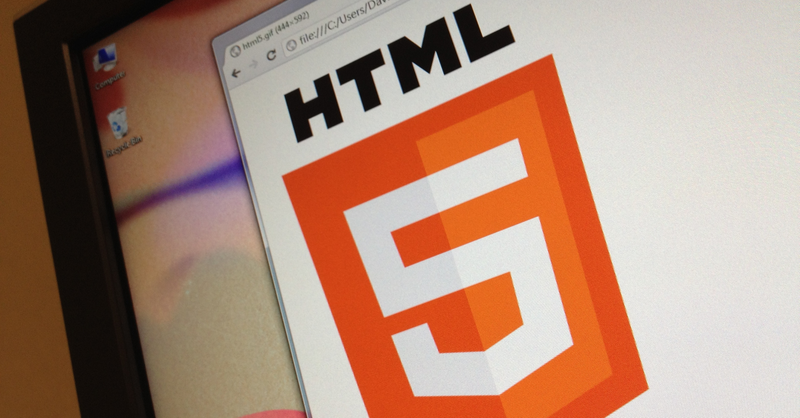
Picture credit: "HTML5 Logo On Screen", by "David Martyn Hunt", used under CC BY / Modified from original
Some might say it has been a long time coming – but recent pronouncements from Google and Microsoft have shown a clear indication towards bolstering HTML5 on their browser experiences.
Writing on the official Chrome blog earlier this month, Google announced that version 53 of its Chrome browser will automatically block certain elements of Flash – such as loading behind the scenes for analytics – in favour of HTML5. The move represents a step up from June last year where some Flash content became click-to-play.
“Flash helped make the Web a rich, dynamic experience, and shaped the modern set of web standards,” wrote Anthony LaForge, Chrome curator of Flash in a blog post. “We continue to work closely with Adobe to ensure that your web experience is as fast and secure as possible and to help the Web transition to HTML5.”
Elsewhere, industry commentators have noticed how a recent Windows 10 build had improved the HTML5 capabilities of its Microsoft Edge browser. According to gHacks, the new features in Edge has pushed it up to 500 out of 555 points in terms of HTML5 compatibility through the HTML5Test product. In comparison, Google Chrome Canary scores 504 while the current stable version of Edge scores 466.
So where does this leave us? Writing for this publication back in January, app development house Mubaloo argued that while HTML5 was more than ready to replace Flash in terms of web development, it was more complicated for apps.
“HTML5 is the future of websites, as it is the language that is best suited for the changing landscape, to support smartphones, tablets and desktops,” the company wrote. “It is also the language that is the best base for creating web apps that can run on desktop or mobile devices. This suits apps that are lighter, in terms of functionality, or require less access to hardware or OS level services, than apps that work best natively.
“For the web, HTML5 isn’t just ready for the big time. It is the big time.”
Read more: If Flash is dead, is HTML5 now ready for the big time?






